Brisk building activity in the 1950s
In the mid-1950s, the Bauverein builds throughout the city, adding several hundred new flats every year. Thanks to the brisk building activity, 3,453 flats were already recorded in 1954, by 1955 more than 4,000 and by 1960 the housing stock had reached 5,000 units.
Social Democrat elected Chairman of the Supervisory Board
In post-war, American-occupied Darmstadt, the employment of members of the NSDAP is prohibited. The Social Democrat and Lord Mayor Ludwig Metzger is therefore appointed as the new Chairman of the Supervisory Board of the Bauverein in 1946. Until 2005, the incumbent mayor will continue to chair the board.
Building boom in the post-war years
From 1949 onwards, the Bauverein, as a municipal company, played a key role in the construction boom of the post-war years. Many of today's existing buildings, such as the houses in Oppenheimer-, Binger- and Moltkestraße in the "Postsiedlung", are built during the reconstruction period.
Buildings with a special purpose
So-called "special-purpose buildings" became a new building task for the Bauverein from the 1950s onwards. A home for single people in Pützerstraße (1954), a workers' home in Viktoriastraße (1956) and two nurses' homes in Bismarckstraße (1957/58) and Friedrichstraße (1960) are built.
Employees on the Supervisory Board for the first time
In 1953, employee representatives are elected to the twelve-member Supervisory Board for the first time. Eight representatives of the city of Darmstadt and four employees are now represented on the Supervisory Board.
Anniversary buildings by Neufert and Bartning
Two renowned architects work for the Bauverein on its 90th anniversary in 1954: Ernst Neufert designs the single people's home in Pützerstraße, which becomes famous as a masterpiece, and Otto Bartning builds a modern residential complex on the corner of Nieder-Ramstädter-Straße and Hochstraße.
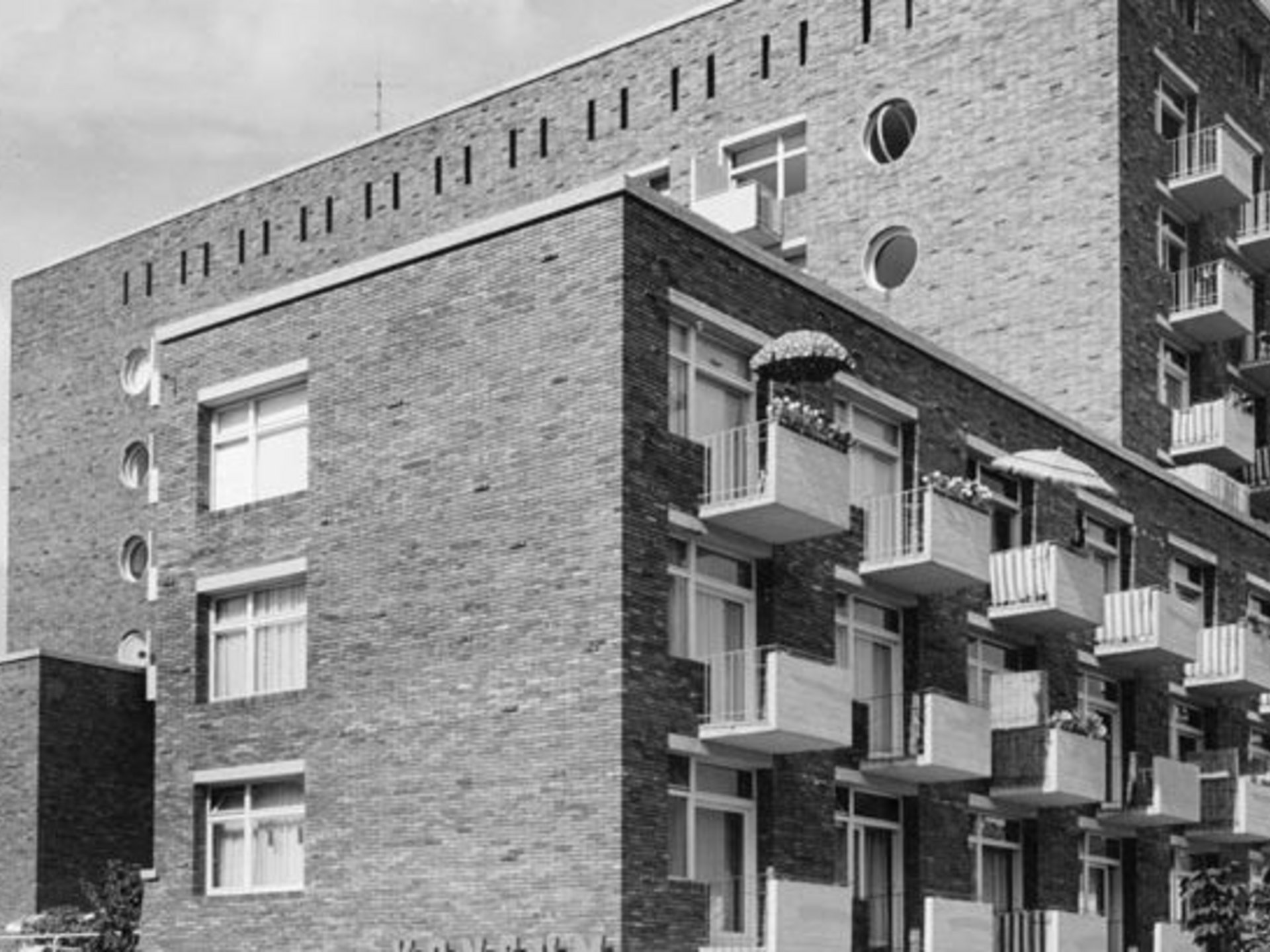
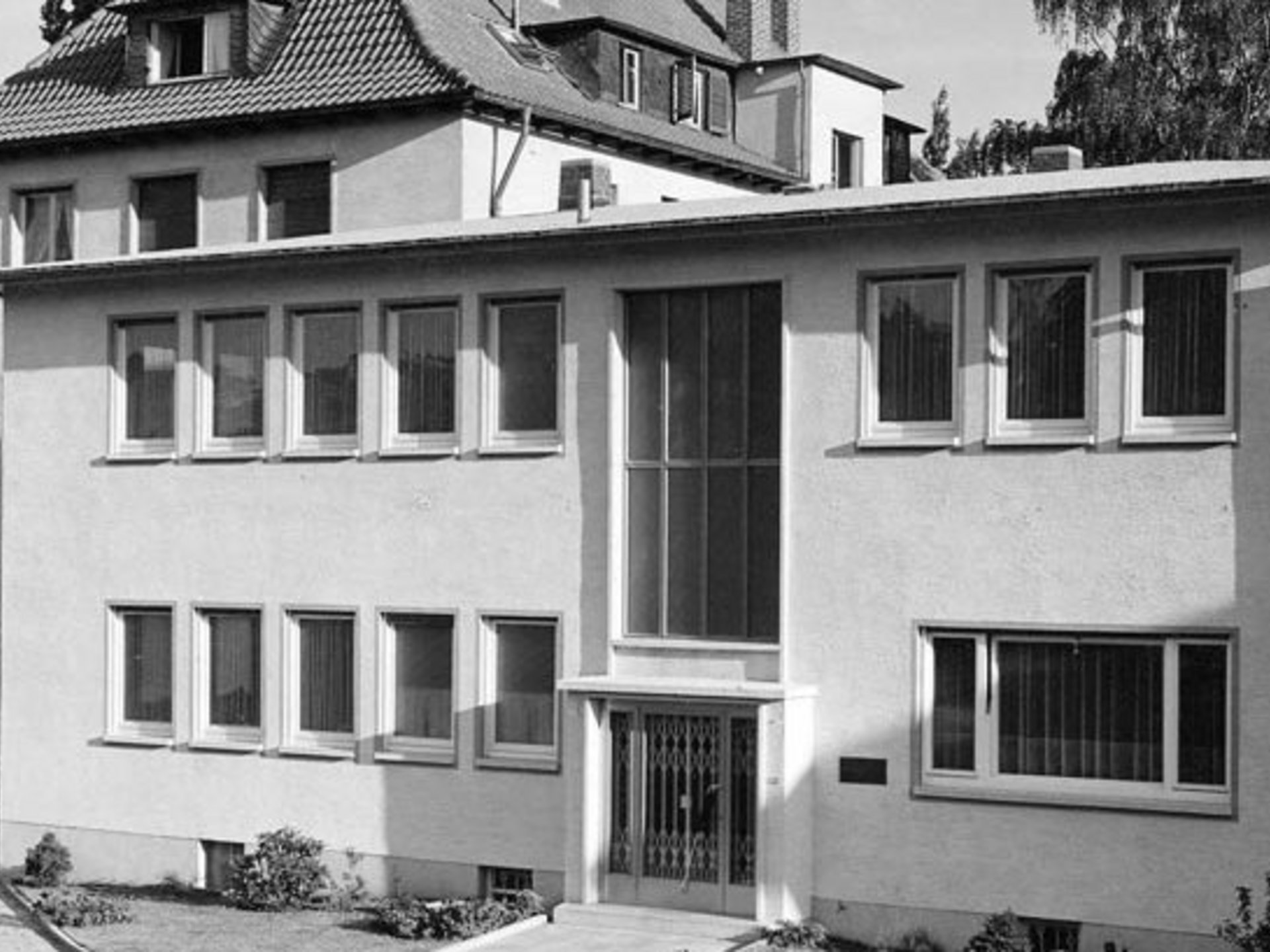
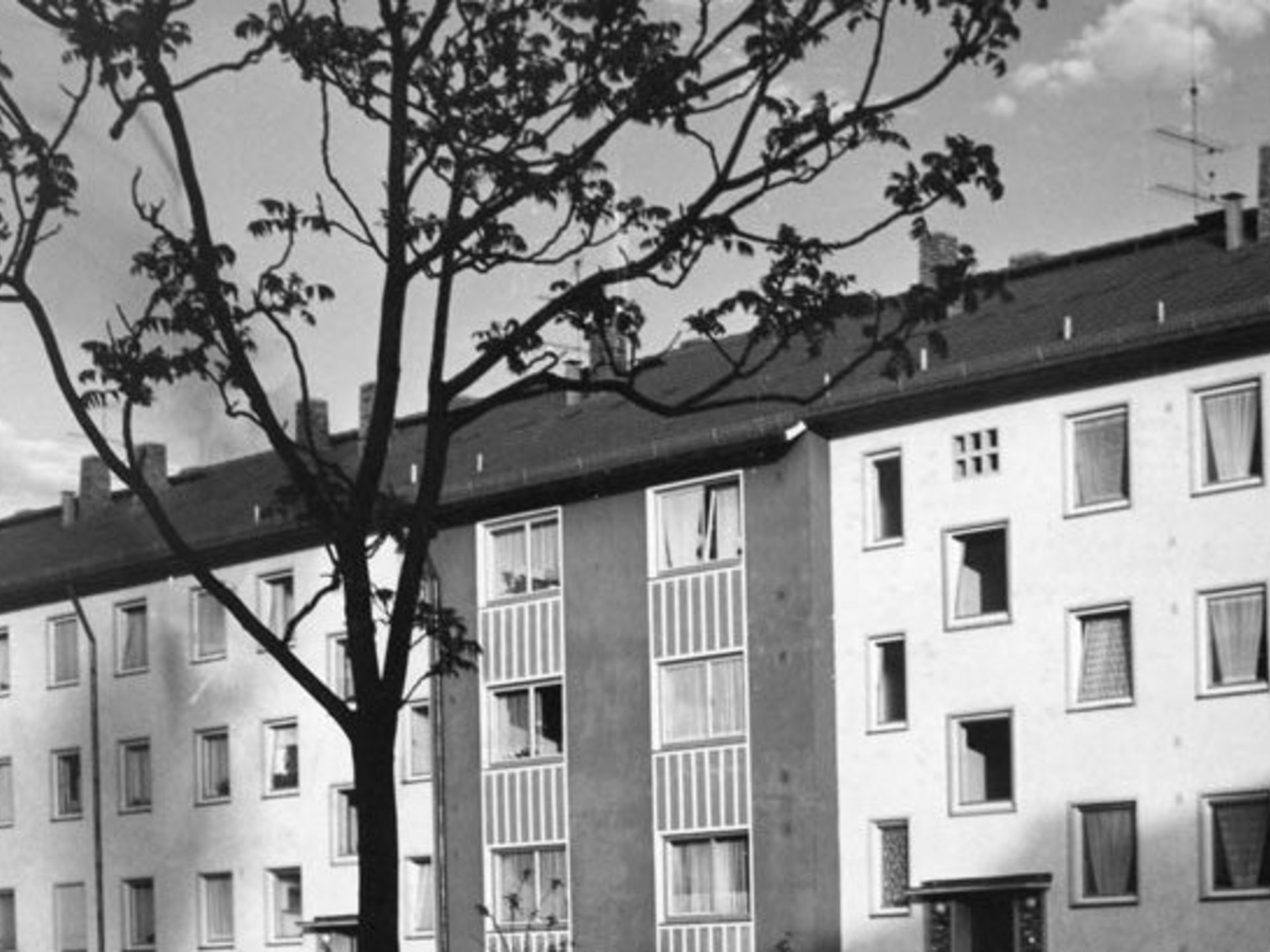
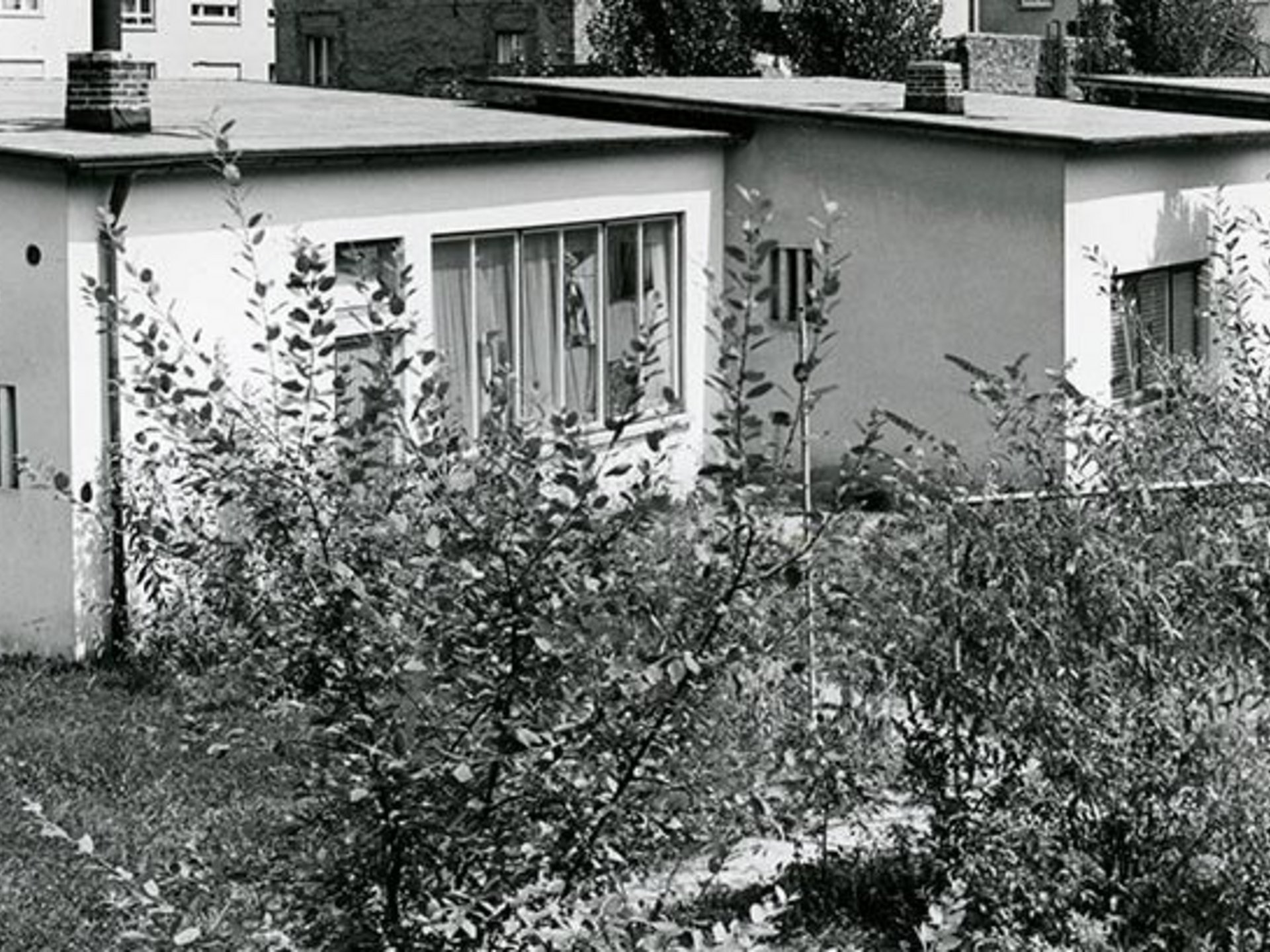
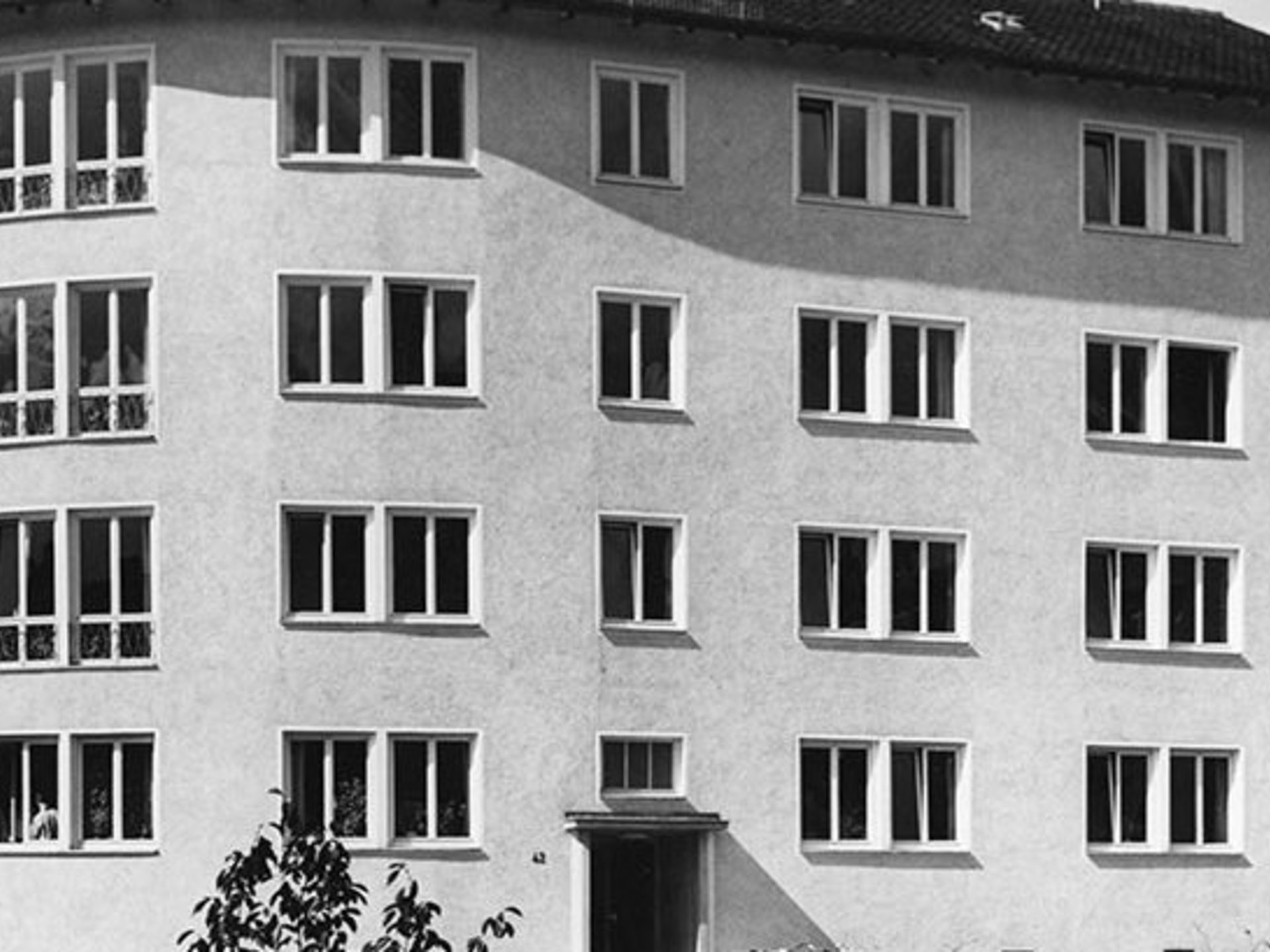
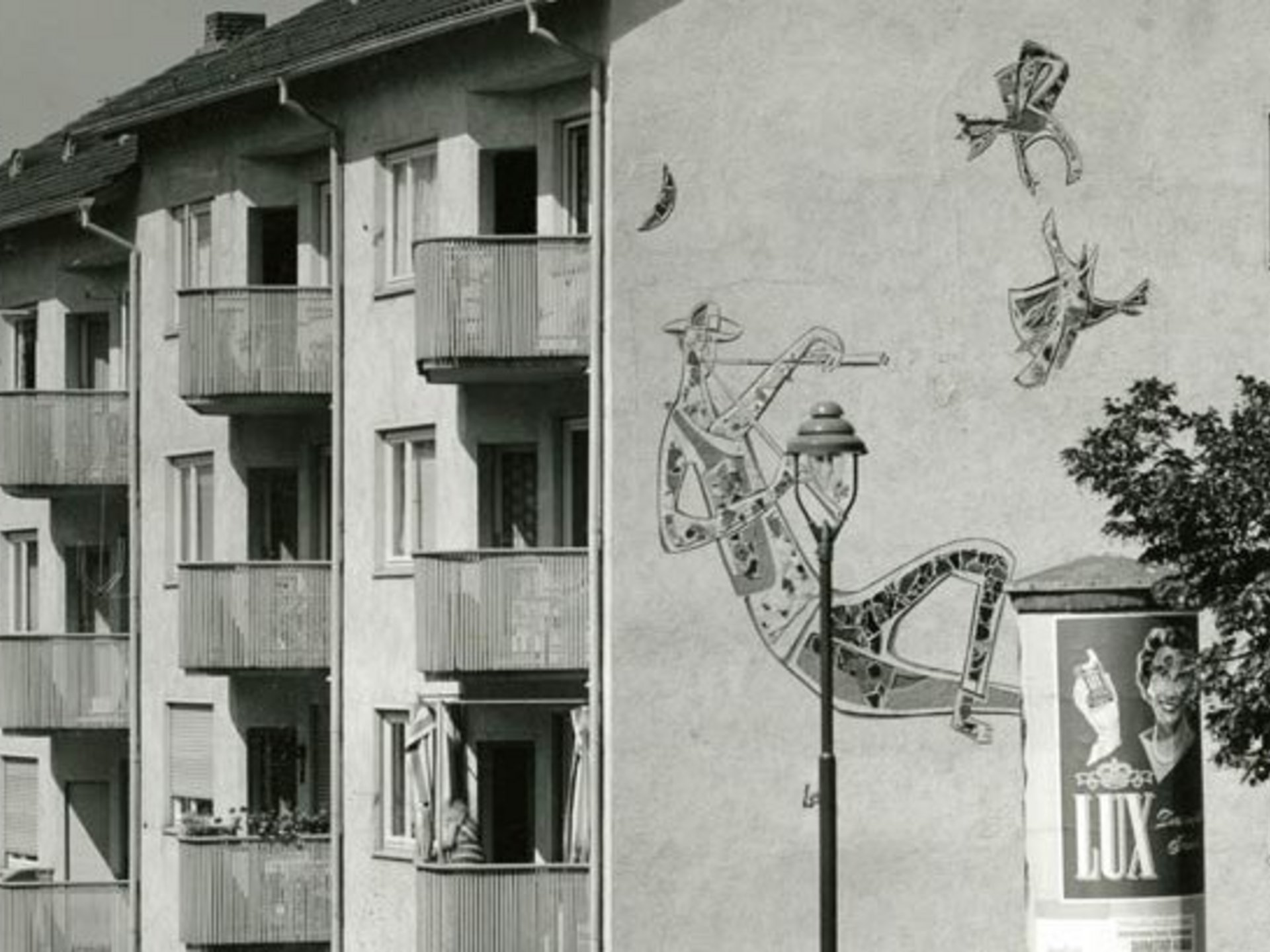
City is sole shareholder
The City of Darmstadt has been the sole Bauverein shareholder since 1958. In the post-war period, the city is able to purchase the remaining Bauverein shares in private ownership and also takes over the shares held by the state of Hesse.
Move into own administration building
In August 1951, the Bauverein board and employees move into their own administrative building at Landgraf-Georg-Strasse 120, designed by architect Peter Müller, and remain the building society's headquarters until 1975.
Several artists' studios built
From 1952, the Bauverein supports Darmstadt artists by building and renting out studios at favourable rates. The first artists' studios are built at Woogsplatz and on the city wall. By 1957, 13 studio buildings had already been completed. Artists such as Peter Weiß, Helmut Lander, Hermann Tomada, Bruno Erdmann, Willi Hofferbert and Carl Gunschmann are supported by the Bauverein in this way.
Art in construction is promoted
In the 1950s and 1960s, the period of the economic miracle, art in construction was specially subsidised in Hesse and especially in Darmstadt. The state of Hesse decided that up to 2% of the construction costs of new buildings should be spent on artistic design. At the Bauverein, board member and occasional painter Ernst Laucke was particularly committed to promoting art. From then on, many Bauverein buildings and surrounding green spaces were adorned with mosaics, murals, sculptures and fountains.
100th anniversary
In 1964, the Bauverein für Arbeiterwohnungen celebrates its 100th anniversary. The anniversary celebration is organised together with a topping-out ceremony in the Eberstadt-Süd development area developed by the Bauverein.
Bauverein acts as planning company
In the Eberstadt-Süd development area, Bauverein also acts as a planning and construction company for entire housing estates for the first time. The decisive factor for this was the "Great Hesse Plan" (1965-1974), which was adopted in 1965 and allocated large urban development projects to the non-profit building societies. In the large housing estate Eberstadt-Süd, the idea of the "dense city" is realised with multi-storey residential complexes.


